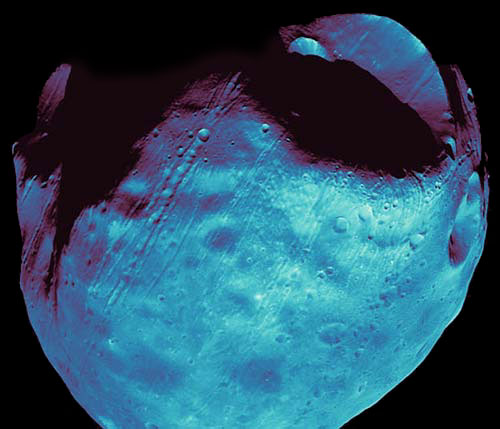Phobos

Phobos is the larger and innermost of Mars' two moons, discovered in 1877. Phobos is closer to its primary than any other moon in the solar system, less than 6000 km above the surface of Mars. It is also one of the smallest moons in the solar system, with a diameter of 22.2 km. In Greek mythology, Phobos is one of the sons of Ares (Mars) and Aphrodite (Venus). Phobos is the Greek word for "fear" (the root of "phobia").
Phobos orbits Mars below the synchronous orbit radius. Thus it rises in the west, moves very rapidly across the sky and sets in the east, usually twice a day. It is so close to the surface that it cannot be seen above the horizon from all points on the surface of Mars. And Phobos is doomed: because its orbit is below synchronous altitude, tidal forces are lowering its orbit (current rate: about 1.8 meters per century). In about 50 million years it will either crash onto the surface of Mars or (more likely) break up into a ring.